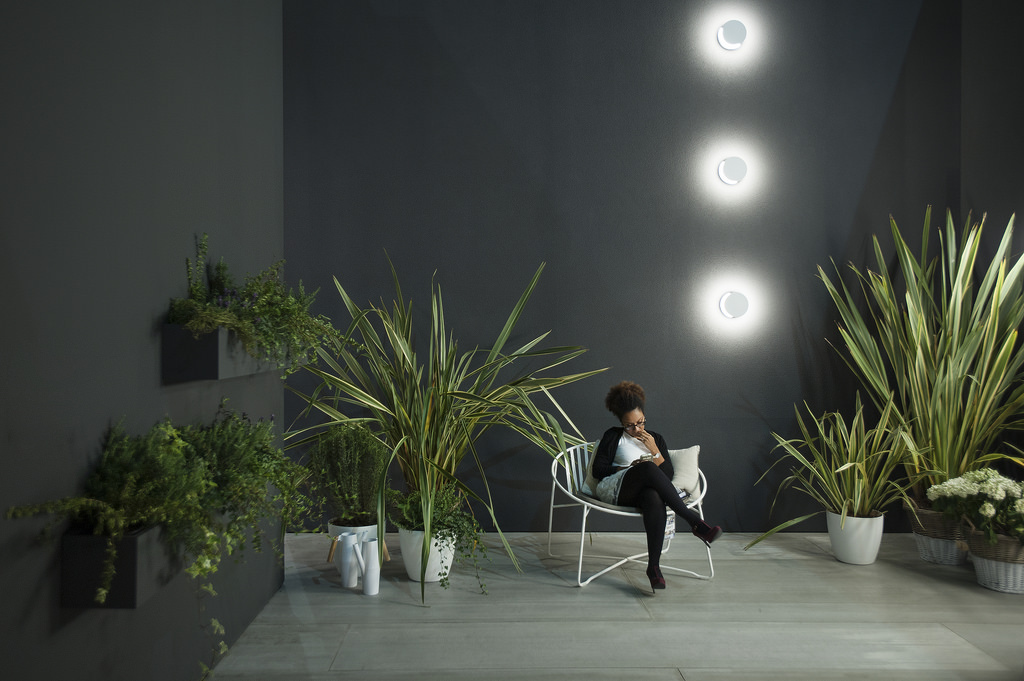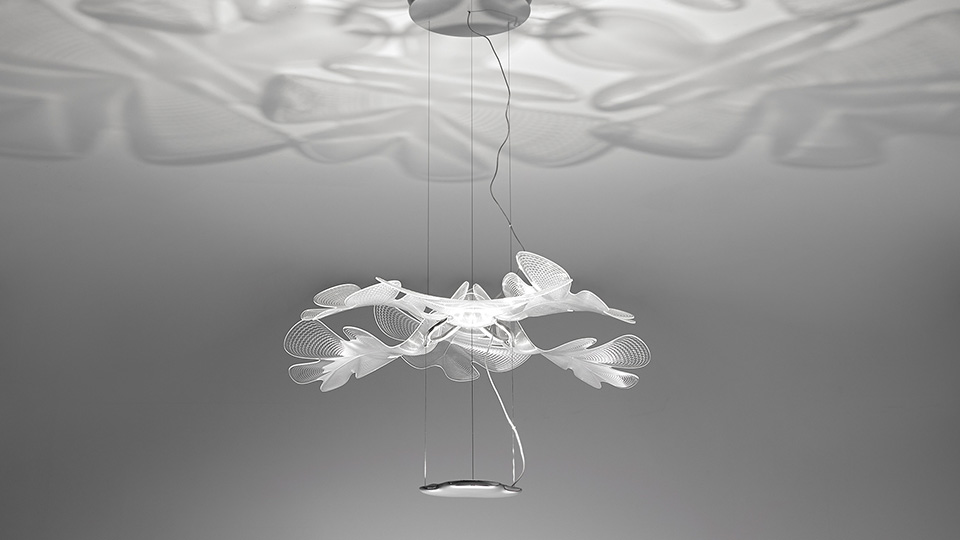LIGHT is one of the foremost topics of cultural discussion this year. UNESCO has in fact proclaimed 2015 the “International Year of Light.” Light as a physical phenomenon, an enduring and complex focus for analysis (it is the theme of Attilio Stocchi’s installation “FAVILLA. To Every Light a Voice”), light as a metaphysical phenomenon, even harder to explore (philosophers and theologians are busy writing about it at this very moment, reminding us of the fundamental cry at the origin of the history of mankind: “Fiat Lux” [Let there be Light]).

Carola Merello
2015 is also the year of Euroluce. What are the trends driving the lighting world? What similarities and what differences with the parallel world of furnishing?

Carola Merello
First of all a premise, as borne out by the Euroluce 2015 pavilions: unlike furniture, light has been fighting a complex figurative battle recently, based simply on the relationship between the material and the immaterial. The rapid evolution of LED sources, which initially caused producers and designers to “take stock”, has in fact “voided” traditional lighting devices of meaning. LED sources are long-lasting, often outlasting the devices themselves, making many of the practical and dimensional justifications for its shapes pointless. In a nutshell, design approaches to lighting have changed tremendously and, basically, the current state of the art has informed two different tactics.

Carola Merello
The first relates to MAXIMUM MINIMISING of the light bulb and, hopefully, its seamless assimilation into the architectural envelope. The second relates to REDISCOVERY OF SHAPE, over and above function, with the focus on designing a stunning simulacrum.
As regards the former, there are Ernesto Gismondi’s “Edgelighting” for Artemide, a very thin sheet (1.5 cm) of PMMA, Davide Groppi’s “Fosbury” for Davide Groppi, a silent line of light, and “Orb”, designed by Büro Famos for Modoluce, an essential hollow sphere.

Davide Groppi’s “Fosbury”
As regards the latter, the approach of the master Ingo Maurer is a paradigmatic, ironic testament to the incandescent light bulb (“Monument for a bulb”), while the young Norwegian Daniel Rybakken’s “Stochastic” for Luceplan is a “cloud” of silvered borosilicate glass spheres, containing, as if by chance, the light source.

Daniel Rybakken’s “Stochastic” for Luceplan
Other “shape-justifying” approaches include trends towards the NARRATIVE, such as Amedeo G. Cavalchini’s “Astolfo” table lamp for Lumencenter (the arm becomes a knight’s spear), and Arik Levy’s June Bird “bird house” for Danese, with a “golden egg – the light bulb – shining inside it.”

“Astolfo” table lamp for Lumencenter

Arik Levy’s June Bird
There is also undoubtedly a certain NOSTALGIA for the early 20th century bourgeois style, as expressed in J.T. Kalmar’s “Fliegenbein” floor lamp with its pleated lampshade, designed by Garth Roberts, and Barovier&Toso’s large “Lincoln” chandelier, its blown glass spheres created by means of the ancient balotòn technique, with a rose gold plated support.

Barovier&Toso’s large “Lincoln” chandelier
Equally romantically nostalgic, yet futuristic in approach, is Ross Lovegrove’s “Chlorophilia” pendant lamp for Artemide, its light and airy leaves give off the light and, especially, project magical shadows. Odo Fioravanti’s “Volée” work lamp for FontanaArte is also rather magical, yet technological; it turns on with a tennis-style wave of the hand and times out after 8 hours.

Ross Lovegrove’s “Chlorophilia”

Odo Fioravanti’s “Volée”
In a nutshell, the driving trend at Euroluce 2015, seems to be the ability to TELL STORIES: the contemporary designers have transmuted into storytellers.
